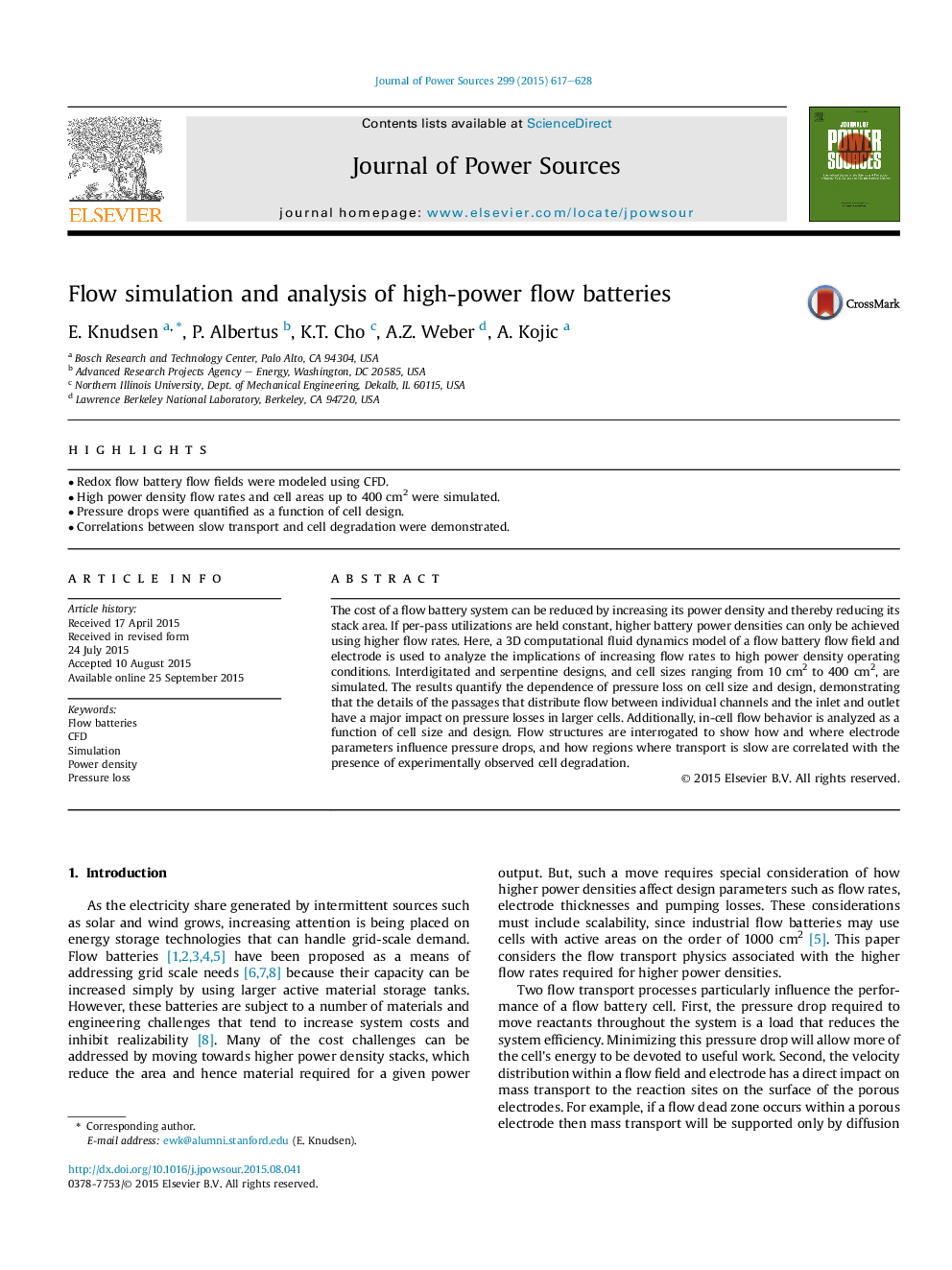| Article ID | Journal | Published Year | Pages | File Type |
|---|---|---|---|---|
| 7730575 | Journal of Power Sources | 2015 | 12 Pages |
Abstract
The cost of a flow battery system can be reduced by increasing its power density and thereby reducing its stack area. If per-pass utilizations are held constant, higher battery power densities can only be achieved using higher flow rates. Here, a 3D computational fluid dynamics model of a flow battery flow field and electrode is used to analyze the implications of increasing flow rates to high power density operating conditions. Interdigitated and serpentine designs, and cell sizes ranging from 10Â cm2 to 400Â cm2, are simulated. The results quantify the dependence of pressure loss on cell size and design, demonstrating that the details of the passages that distribute flow between individual channels and the inlet and outlet have a major impact on pressure losses in larger cells. Additionally, in-cell flow behavior is analyzed as a function of cell size and design. Flow structures are interrogated to show how and where electrode parameters influence pressure drops, and how regions where transport is slow are correlated with the presence of experimentally observed cell degradation.
Related Topics
Physical Sciences and Engineering
Chemistry
Electrochemistry
Authors
E. Knudsen, P. Albertus, K.T. Cho, A.Z. Weber, A. Kojic,
